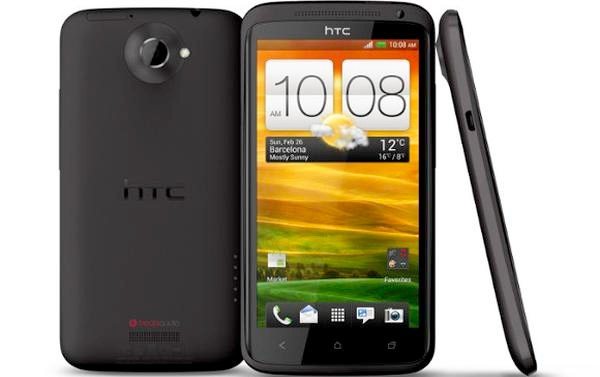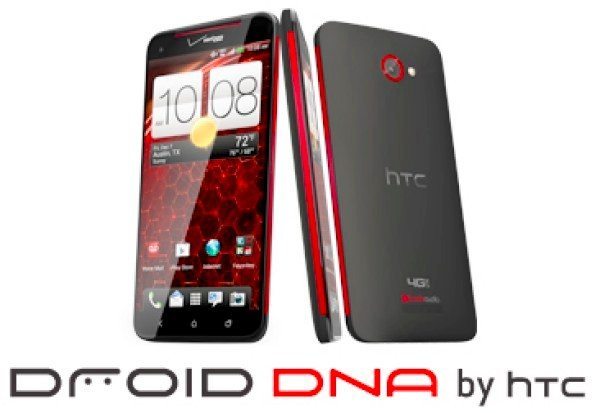With the holiday season fast approaching many people decide that a new smartphone will be at the top of their wish lists. However with the sheer amount of impressive phones around at the moment it can be very difficult to decipher which might be best for you. Today we’re taking a look at the HTC One X+ vs. Droid DNA in a bid to consider the winner as regards to which might be the best choice for you.
These are both highly regarded devices from HTC and while the One X+ (or One X Plus) has just become available in various regions across the world the Droid DNA is a phone for Verizon in the US and ships from today, with availability in Verizon stores from November 21. Of course the HTC One X+ definitely holds the advantage in this respect but if you’re in the US you’ll be able to choose from both. Although we cannot delve into the full features and spec of each device as there is so much to take into account, we will focus on the key details and factors that should hopefully give you a very good idea of what each phone has to offer. In many ways they are very similar although there are some important differences too.
Processor
The HTC One X+ is powered by a 1.7GHz NVIDIA Tegra 3 quad-core processor while the Droid DNA has a 1.5GHz Qualcomm quad-core Krait processor. Both are very well equipped in this respect then.
Display
The HTC One X+ has a 4.7-inch Super LCD2 display with resolution of 1280 x 720 and 312ppi. This is a very decent display but the Droid DNA’s display has been greeted with huge praise with many experts saying it’s the best they’ve ever seen (although not everybody is so convinced). The Droid DNA has a whopping 5-inch Super LCD3 display with resolution of 1920 x 1080 and a massive 441ppi, taking display specs to a new level.

RAM and Storage
You’ll find 1GB of RAM and either 32 or 64GB (non-expandable) internal storage options for the One X+ but although the Droid DNA has 2GB of RAM it has only 16GB of internal storage that is also non-expandable.
Camera
An 8-megapixel rear camera with autofocus, LED flash, 1080p video recording with simultaneous video and image capture is touted on the One X+ as well as a 1.6-megapixel 720p front-facing camera. The Droid DNA also has an 8-megapixel rear camera featuring autofocus, LED flash, 1080p video recording with simultaneous video and image capture but steps up with the front-facing shooter to 2.1-megapixels and full 1080p HD.
Operating Systems
The HTC One X+ released on Android 4.1.1 Jelly Bean while the Droid DNA has 4.1 Jelly Bean upgradeable to 4.2 Jelly Bean at some point. Both also feature HTC Sense UI 4+.
Battery
There’s not much between them here with the One X+ having a 2100mAh battery and the Droid DNA having a 2020mAh battery. To be honest it’s a shame that both don’t have a larger battery capacity.

Dimensions
The One X+ measures 134.4mm x 69.9mm x 8.9mm and weighs 135g. The Droid DNA measures 141mm x 70.5mm x 9.7mm, weighing in at 138g.
Pricing and Color
The One X+ price will obviously vary by region but in the US for example is likely to set you back around $199 on the usual two-year contract. It comes in black or white color options. There’s nothing to split them here then as the Droid DNA on Verizon also costs $199 on-contract but is only available in black.
Both phones are very impressive and we’ll add that both are also LTE-equipped and also support NFC. On many occasions as both are so notable the design may help you to make up your mind, as this is very much a personal preference. However in the case of the One X+ and Droid DNA they are also both very appealing phones to look at too so this may confuse you further instead of making your choice easier.
It’s actually pretty hard to choose between these two phones and decide an outright winner but two of the main differences are the display and the amount of storage. The One X+ has more internal storage and this will be more important to some people than others. On the other hand the Droid DNA’s display has received so many plaudits that it’s hard to ignore and many of you will decide that having a larger, better display is the most important factor for you. The front-facing full 1080p HD camera on the Droid DNA also beats the equivalent for the One X+ with 720p so that’s another point to take into account.
We’d like to hear from readers about the HTC One X+ and HTC Droid DNA. Taking the above details into account which of these two smartphones would you choose? Let us know with your comments.